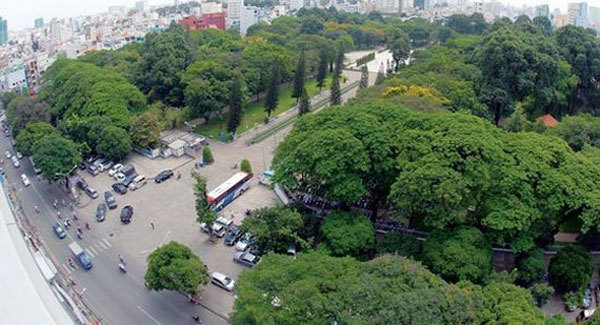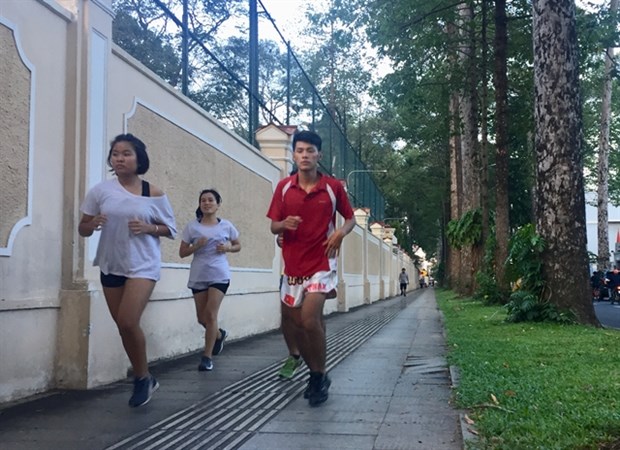 |
| Le Van Tam Park in HCM City’s District 1. — Photo www.sggp.org.vn |
The existing greenery and parks in the city must be preserved to safeguard the quality of life of people, improve air quality and reduce pollution, it said.
The city expects to build 650ha of public parks in the next 10 years so that there is at least one square metre of park per resident.
Besides, 30,000 trees will be planted in public spaces by 2025 and 50,000 by 2030.
By 2025 public parks are expected to expand by 150ha, taking availability per capita to 0.65sq.m.
To increase green space, city authorities plan to improve propaganda and offer incentives to encourage individuals, organisations and businesses to develop green areas, especially in residential areas and housing projects.
Plans to green roads and parks should be appropriate for the city’s climatic and soil conditions, the committee said.
Existing parks and green spaces fail to meet the increasing public demand for a modern city.
At the end of 2018 the city had 369 parks covering more than 500ha in public places and residential areas, or 0.55sq.m per capita.
Most are in the inner city, while there is a lack of public parks in slightly distant districts like 9, 12, Thu Duc, Binh Tan, Nha Be, Hoc Mon, Cu Chi, and Binh Chanh.
Only about 1.54ha of public parks are being added to the city each year.
Many of the existing ones were built years ago and have deteriorated, while some have been used for purposes like shopping, entertainment and others for years.
Many programmes to build public parks have been planned since 1993, but all remain on paper. VNS

HCM City to build more public parks
HCM City plans to build more public parks with a total coverage of 650ha in the next 10 years, offering at least one square metre of public parks per resident.

HCM City to build plant variety, animal breeding centres
Farmers and experts have asked HCM City authorities to remove hindrances and create favourable conditions for residents to build greenhouses and breeding centres on agricultural land used to build nursery gardens.